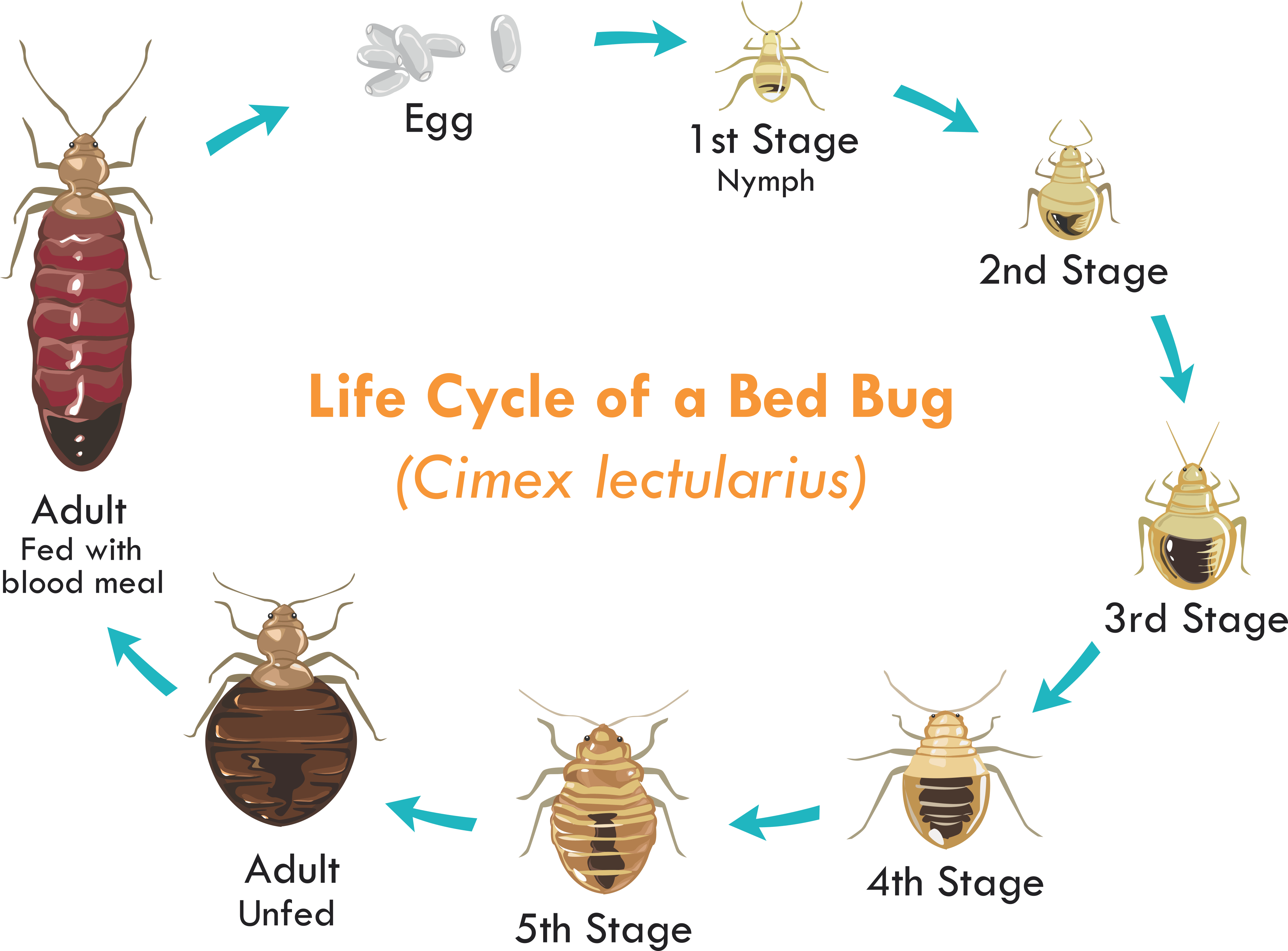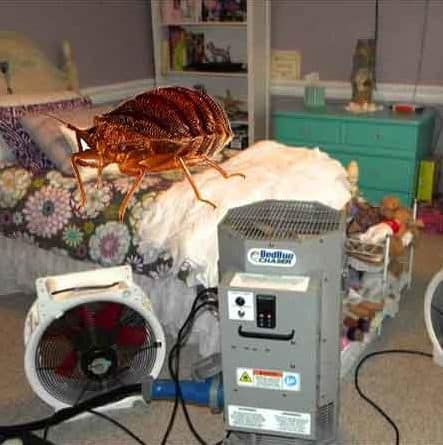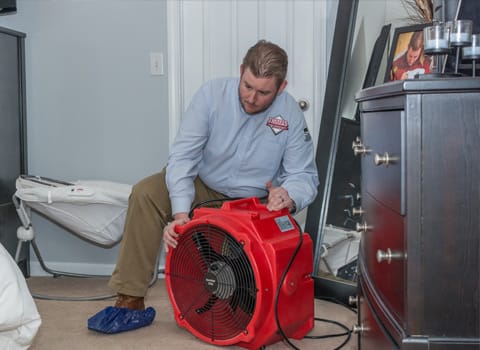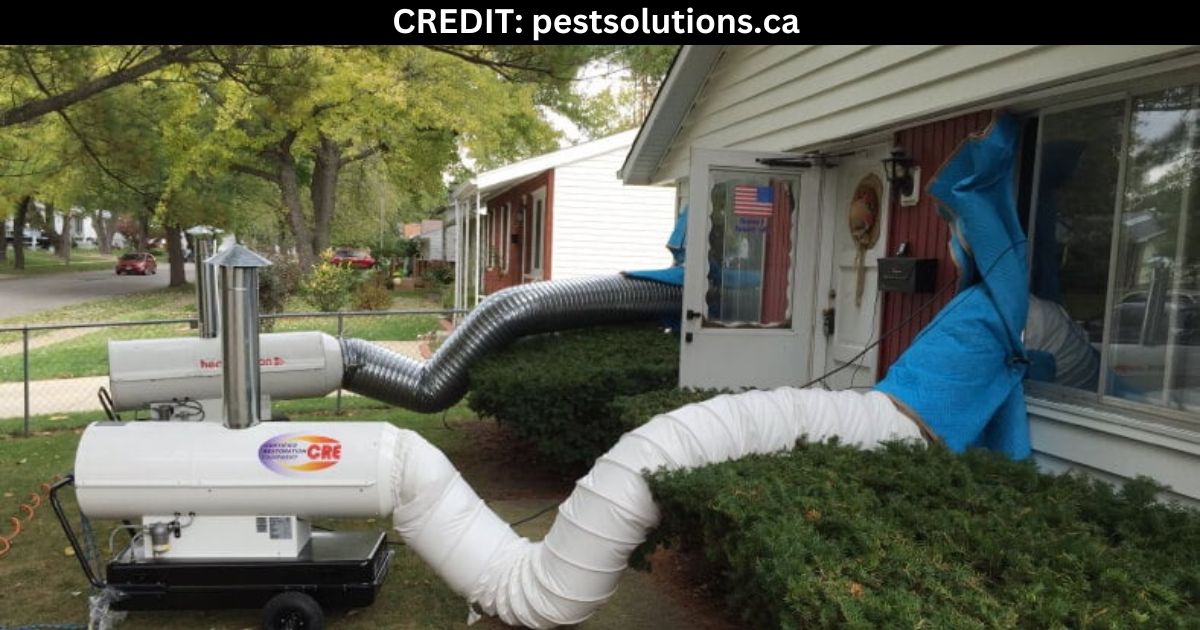To use heat to kill bed bugs, raise the temperature in the infested area to at least 118°F for 1 hour, or 130°F for a shorter period. This can be achieved using steam cleaners, dryers, or professional heat treatments.
Dealing with a bed bug infestation can be a frustrating and stressful experience. These tiny pests can quickly spread throughout a home and are notoriously difficult to eliminate. One effective method for eradicating bed bugs is to use heat treatments.
By raising the temperature in the infested area, you can effectively kill bed bugs and their eggs, offering a chemical-free solution to the problem. We will explore the use of heat as a method for exterminating bed bugs and provide tips for implementing this approach in your home. Keep reading to learn how to use heat to get rid of bed bugs and take back control of your living space.

Credit: www.ohiogotbugs.com
Identifying Bed Bug Infestations
Signs Of Bed Bugs
Signs of bed bugs can vary, but common indicators include itchy red bites, bloodstains on sheets, and small dark spots around mattress seams and other furniture.
Locating Bed Bug Hotspots
- Check the mattress seams and crevices. Bed bugs tend to hide in these areas.
- Inspect upholstered furniture, especially the seams and underneath the cushions.
- Look around electrical outlets, wall fixtures, and any cracks or crevices in the room.

Credit: www.envirotechpestcontrol.com
Understanding Heat Treatment
Understanding Heat Treatment is a highly effective method for eradicating bed bugs from your home. Using heat to kill bed bugs involves raising the temperature within the infested area to a level that is lethal to the insects, ensuring that all life stages of the bed bugs, including the eggs, are destroyed.
How Heat Kills Bed Bugs
Heat kills bed bugs through a process called thermal death point, which refers to the temperature at which bed bugs perish. The optimal temperature for eliminating bed bugs and their eggs is around 120 to 140 degrees Fahrenheit.
Advantages Of Heat Treatment
Heat treatment offers several advantages over traditional chemical methods, including the ability to penetrate hard-to-reach areas, such as wall voids and cracks, where bed bugs often hide. It is also a non-toxic approach, eliminating the need for hazardous chemicals and minimizing the risk of chemical resistance in bed bugs. Furthermore, heat treatment can be completed in a single session, providing a swift solution to a bed bug infestation.
Preparing For Heat Treatment
Eliminate bed bugs with heat treatment by following these steps. Firstly, inspect the infested area thoroughly, then remove clutter and personal items. Next, prepare the room for treatment by ensuring proper ventilation. Finally, use specialized equipment to raise the temperature and effectively eliminate bed bugs without using harmful chemicals.
Clearing The Area
Remove clutter and unnecessary items from the room to ensure even heat distribution.
Vacuum the area thoroughly before treatment to eliminate any bed bugs and their eggs.
Protecting Sensitive Items
Seal electronic devices in special bags designed to withstand high temperatures.
Wrap delicate items in protective coverings to prevent damage during the heat treatment.
Conducting Heat Treatment
When it comes to eliminating a bed bug infestation, conducting heat treatment is an effective solution. Heat treatment involves raising the temperature of an infested area to a level that kills all bed bugs and their eggs. In this section, we will discuss how to use heat equipment and monitor temperature levels to ensure a successful heat treatment.
Using Heat Equipment
Using specialized heat equipment is crucial for effective bed bug elimination. There are several options available, including:
- Heat chambers: These portable units allow you to treat small items such as clothing, bedding, and small furniture items by heating them to a temperature lethal to bed bugs.
- Heat guns: These handheld devices are useful for treating cracks, crevices, and other hard-to-reach areas. They emit a controlled stream of hot air to eliminate bed bugs in their hiding spots.
- Heat treatment units: For larger infested areas, professional-grade heat treatment units are recommended. These units distribute heat evenly throughout the space, ensuring all bed bugs are exposed to lethal temperatures.
Monitoring Temperature Levels
Monitoring temperature levels during heat treatment is essential to ensure effectiveness. Here are some key points to consider:
- Use a reliable temperature monitoring device, such as a digital thermometer with a probe, to measure the temperature accurately.
- Place temperature sensors strategically in different locations to monitor heat distribution.
- Regularly check the temperature readings to ensure it stays within the lethal range for bed bugs, typically between 120°F and 140°F.
- Pay close attention to areas where temperature fluctuations may occur, such as near windows or doors.
By consistently monitoring the temperature levels, you can be confident that the heat treatment is eliminating all bed bugs effectively.
Ensuring Effectiveness
When it comes to getting rid of bed bugs, using heat treatment is one of the most effective methods. However, it is essential to ensure that the heat treatment is carried out properly to maximize its efficacy. In this section, we will discuss two important factors that contribute to the effectiveness of heat treatment: dealing with heat-resistant bed bugs and follow-up inspections.
Dealing With Heat-resistant Bed Bugs
Unfortunately, not all bed bugs are easily killed by heat. Some bed bugs have developed a tolerance to high temperatures, which makes them more challenging to eliminate. Therefore, it is crucial to adopt strategies that target these heat-resistant bed bugs to achieve successful results.
To address this issue, professionals often use specialized heaters that can reach temperatures beyond what regular heaters can achieve. These high-powered devices can generate intense heat, ensuring that even the most resilient bed bugs are eradicated. By employing these advanced heating methods, you can effectively deal with heat-resistant bed bugs, leaving no survivors behind.
Follow-up Inspections
While heat treatment can be highly successful in eliminating bed bugs, it is vital to conduct follow-up inspections to ensure that the infestation has been fully eradicated. Bed bugs are notorious for their ability to hide in hard-to-reach places, making it challenging to spot any survivors.
During follow-up inspections, professionals will carefully examine the treated areas, paying close attention to common bed bug hiding spots such as cracks, crevices, and seams. They may also employ detection tools such as bed bug monitors to track any remaining pests. By conducting thorough inspections after the heat treatment, you can be confident that the infestation has been completely eliminated.
Remember, the effectiveness of heat treatment relies on both addressing heat-resistant bed bugs and performing follow-up inspections. By following these crucial steps, you can ensure that your efforts to eliminate bed bugs using heat are successful.
Benefits Of Using Heat
Discover the advantages of using heat as a powerful method to eradicate bed bugs from your home.
Chemical-free Approach
Heat treatment offers a natural way to eliminate bed bugs without the use of harmful chemicals.
Preventing Bed Bug Recurrence
Heat treatment not only kills bed bugs but also helps prevent their return by reaching all areas where they may hide.

Credit: www.thomaspestservices.com
Frequently Asked Questions On How To Use Heat To Kill Bed Bugs?
Can Heat Really Kill Bed Bugs?
Yes, heat is one of the most effective methods to kill bed bugs as their eggs and nymphs are very sensitive to high temperatures. Heating the infested area above 120°F will kill both the bugs and their eggs, ensuring complete eradication.
How Does Heat Treatment Work Against Bed Bugs?
Heat treatment involves raising the temperature of the infested area to a level that exceeds the thermal death point for bed bugs. This kills the bugs and their eggs by denaturing the proteins in their bodies, effectively eliminating the infestation.
Is Heat Treatment Safe For My Home?
Yes, heat treatment is both safe and eco-friendly. It eliminates the need for harmful chemicals and pesticides, making it a healthier option for both you and the environment. Professional heat treatment providers use specially designed equipment to ensure your home’s safety during the process.
Can I Use Heat Treatment On My Own?
While it’s possible to perform heat treatment on your own, it’s highly recommended to hire professionals for this task. They have the expertise and specialized equipment necessary to ensure the proper application of heat, maximizing efficiency and reducing the risk of property damage.
Conclusion
Incorporating heat treatment can effectively eliminate bed bugs in your home. With proper technique and equipment, you can eradicate these pests and prevent future infestations. Remember to follow safety guidelines and consult professionals for best results. Implementing heat strategies offers a reliable solution for dealing with bed bugs.

I’m MD Tanvir, and I bring years of expertise gained from working closely with pest control companies to the forefront. My journey in the industry has inspired me to launch Bug Battler, a platform aimed at equipping people with the know-how to combat pests autonomously. Through Bug Battler, I aim to empower individuals with practical insights to tackle pest infestations effectively.

